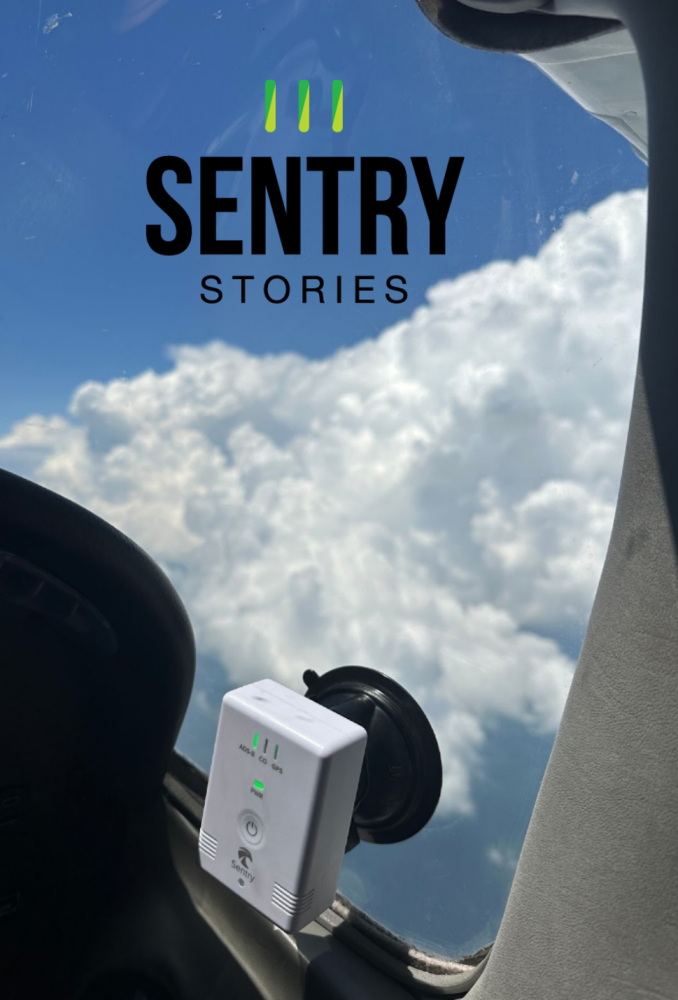
In each Sentry Story, we’ll describe an actual flight and share the view out the window and ForeFlight screenshots. You’ll see how Sentry can be used to make flying safer and easier, plus you’ll learn some tips for flying with datalink weather. Want to share your story? Email ipad@sportys.com
Learn more about the Sentry line of ADS-B Receivers:
Sentry Mini>>
Sentry>>
Sentry Plus>>
Sentry Story #8
Date: June 22, 2025
Aircraft: Cessna 182
Route: I69 to KCZL
Flight rules: VFR
Altitude: 6,500-9,500 MSL
While I’m IFR rated, I still prefer to fly VFR. It provides me the freedom to go where I want, when I want, without having to ask for permission. I especially don’t like flying IFR when there is convective activity. Flying through stable, stratus clouds is a lot more enjoyable than flying through big puffy clouds.
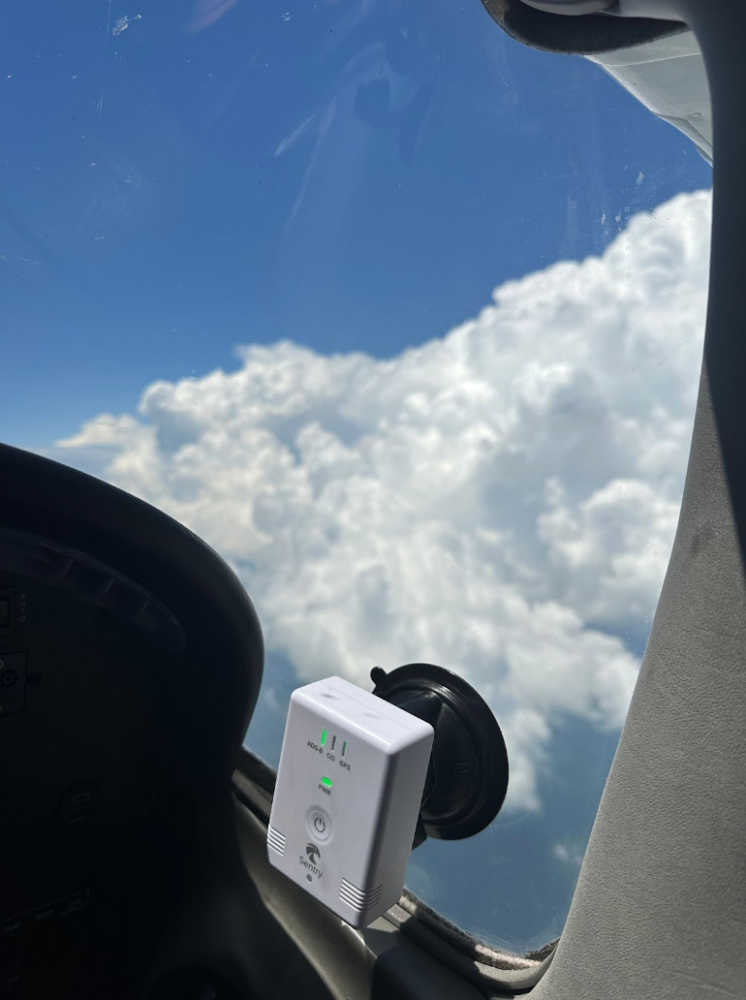
The mission was to fly a family member down to Georgia. It was a hot summer day in the Midwest and on days like this, we often have clearer skies in the morning with big puffy clouds forming in the afternoon, and then growing into thunderstorms by the evening. I departed for Georgia at 10 AM in the morning and climbed up to 6,500 feet. I only hung out there for about 30 minutes before it became obvious that I was going to have to climb higher to get over the big puffy clouds. They were plentiful and definitely climbing in altitude. At 8,500 feet, I was above all the clouds. I flew southwest down a line of clouds directly to my west that had climbed even higher and started to have anvils at the top: the classic thunderstorm look. One quick look at ForeFlight connected to Sentry, and it reported some green, yellow, and even some orange in some of those clouds over there.
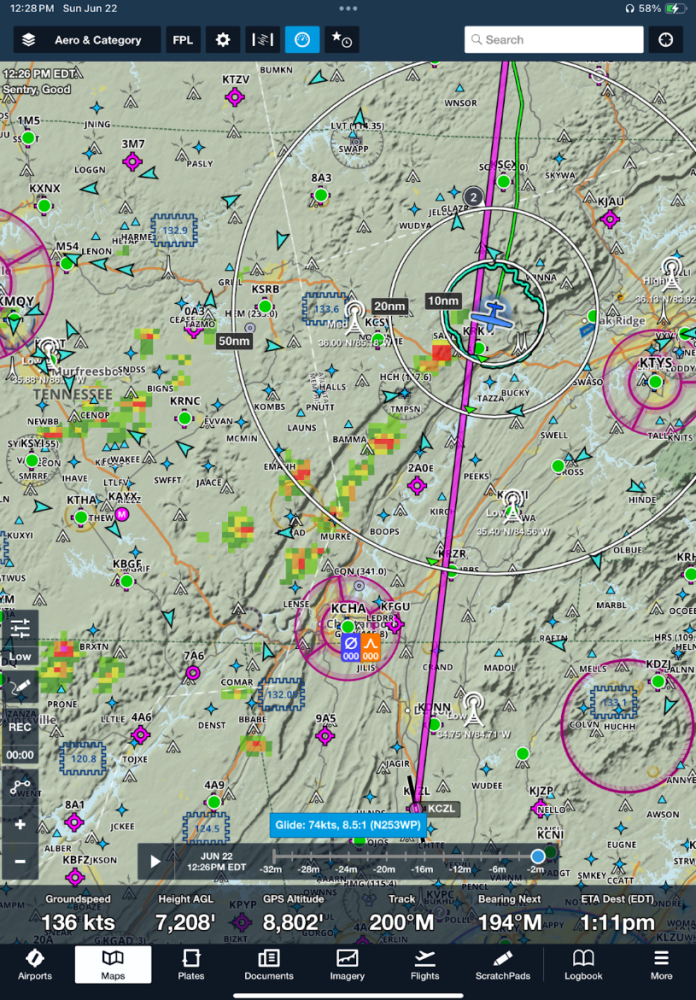
I had plenty of separation from the line, was above all the tops of the big puffy clouds in my area, and cool/comfortable at my cruising altitude of 8500 feet. Using the animation feature on Foreflight, you could see that the storms were not moving much. They were pretty much staying in line with a mountain ridge that is well known for pushing up weather.
Knowing that I had to come back the same way, I was making a note of how high the clouds were climbing and decided that my return trip was going to be at 9500 feet given that my course would be on an easterly heading.
I descended down into a hot Calhoun airport and dropped of my passenger. I took on some fuel for the return trip before blasting off into the wild blue yonder once again. I don’t get to fly solo too often and was looking forward to a relaxing trip home.
As Sentry started picking up the weather, I recognized the familiar line of storms that were in the same spot that it was before. As I leveled off at 9500 feet, I could see that the clouds to the west had grown up considerably from when I came down. The clouds to the east, however, were still well below me. This is important because it gave me an out. If the clouds to the west start creeping in, I could easily turn more to the east and keep the required VFR clearances.
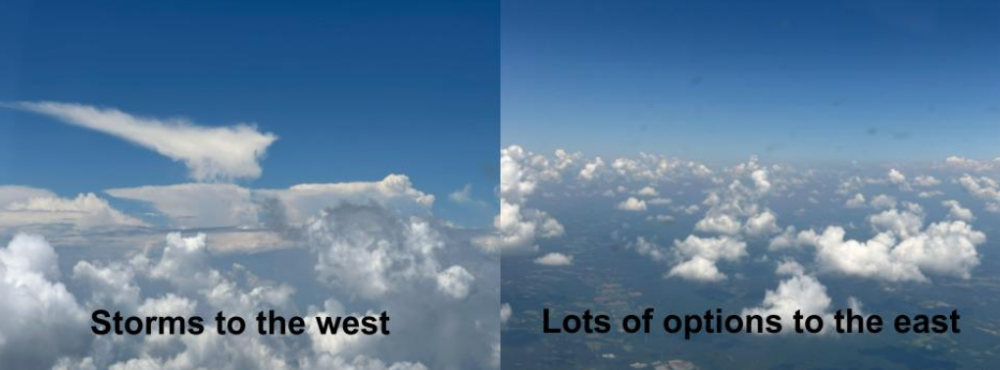
As I worked my way north along this line of storms, Sentry started to show some green and yellow to the north side of the line where there previously hadn't been any weather. Using the old Mark 1 eyeball (still the most reliable source of weather data), the clouds to the north were definitely rising above the 12,000 to 15,000 feet range. I was not going to be able to make it a direct flight without getting a pop-up clearance.
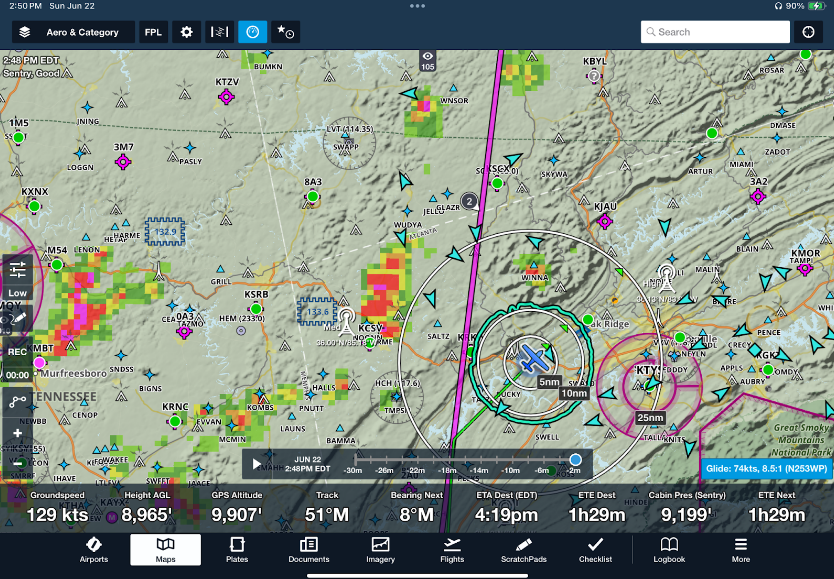
My eastern “out” was right out my window. Given that it was comfortable, cool, and smooth, not to mention the extra fuel I had just picked up from the kind folks in Calhoun, I chose to divert to the east. I originally thought this diversion would only last for 30-40 miles, but the top of the clouds to the North were still well above 12000 feet. I was well east of all the green and yellows, but there were definitely some good bumps in and around those clouds.
Using Sentry to check the METARs at airports along my route, I saw that the bases of the puffy clouds were around 6,500 feet. I thought, “If I can’t go over them, I might as well go under them.” Dropping down to 4500 feet for the last 45 minutes of the flight proved to be the best thing to do. I was pretty far north of the Tennessee ridges and still in decent air. We had a couple of bumps, and warmer air was coming through the vents, but it still beats trying to get a pop-up clearance to blow through a bunch of bumpy clouds.
I put right around five hours on the Hobbs, and Sentry was rock solid the whole time. I can count on Sentry for a solid day of flying without needing to recharge. Flying with ADS-B is a must for me. The weather component is great on long cross-country runs, but it’s the traffic that seals the deal for me. Having an extra set of eyes looking for bogies has saved my bacon on more than a few occasions. Pro tip: Use a headset with Bluetooth so you get audio alerts. ForeFlight does a great job of calling out traffic, but what good is it if you can’t hear it?
Want to share your story? Email ipad@sportys.com for a chance to be featured in one of our Sentry Stories.
Learn more
Read every edition of Sentry Stories here
Sentry line of ADS-B Receivers:






